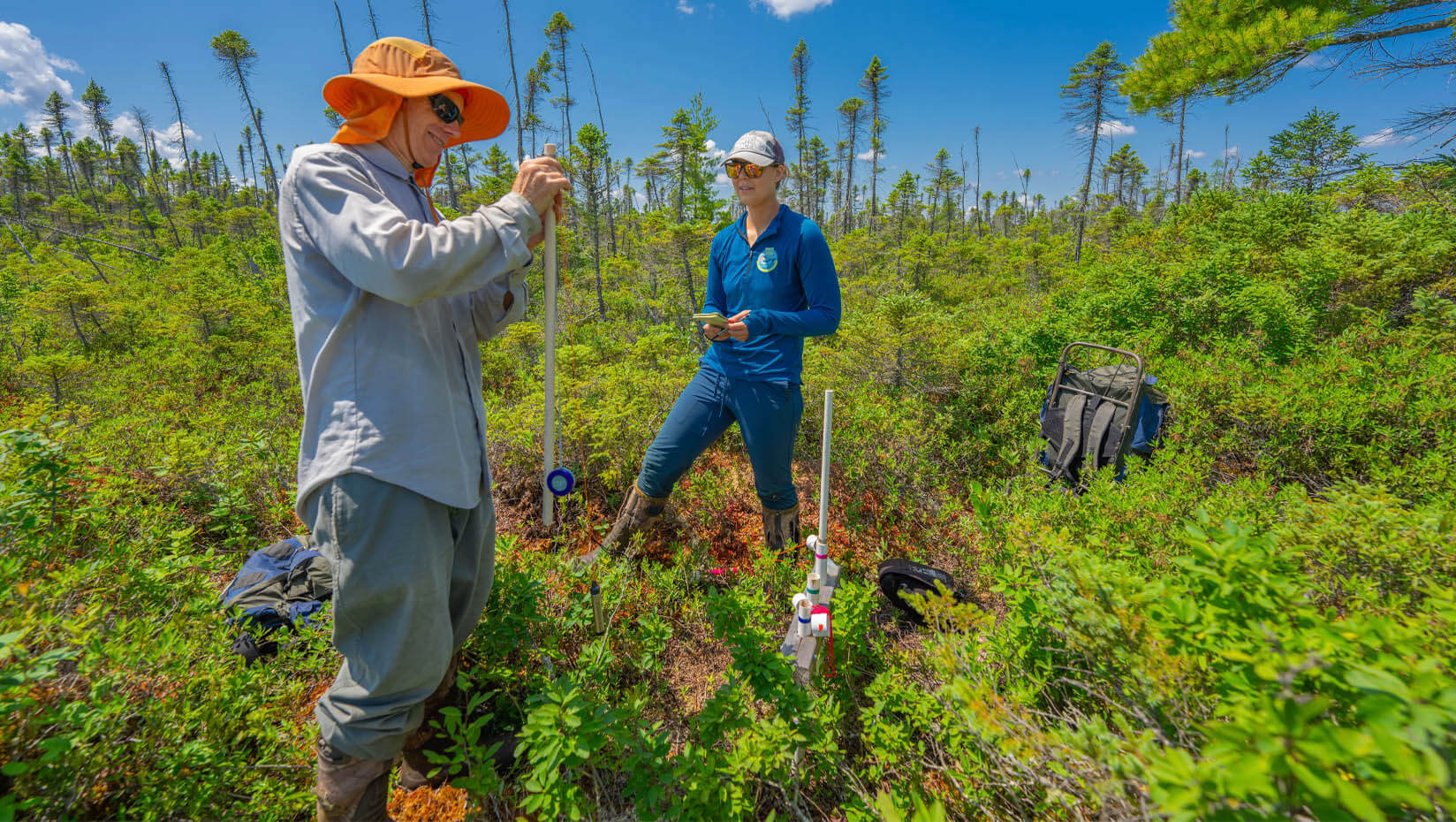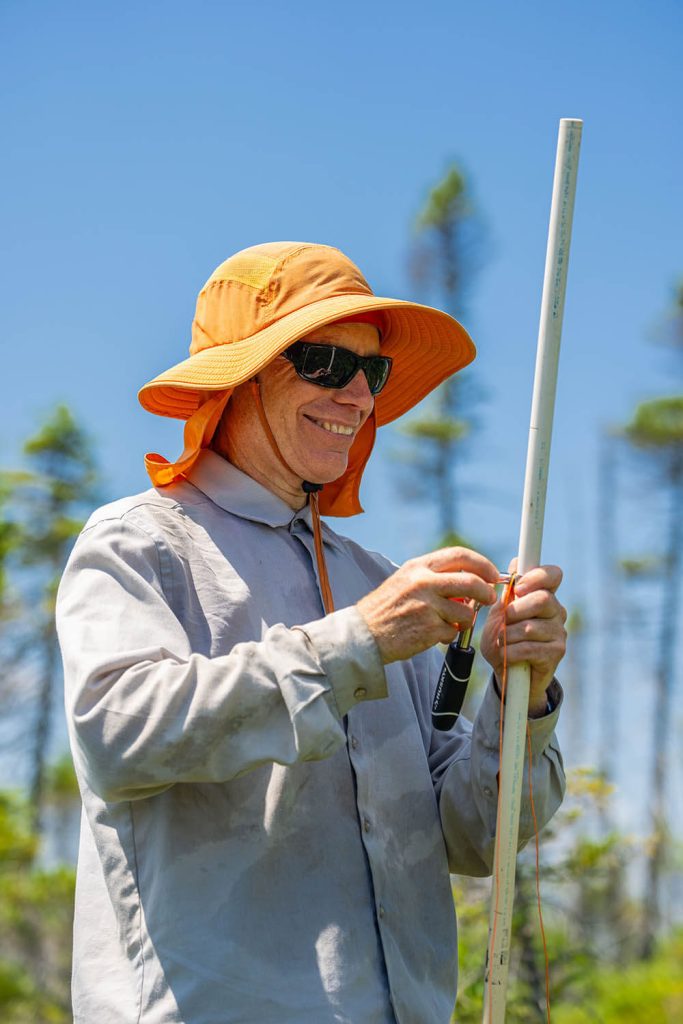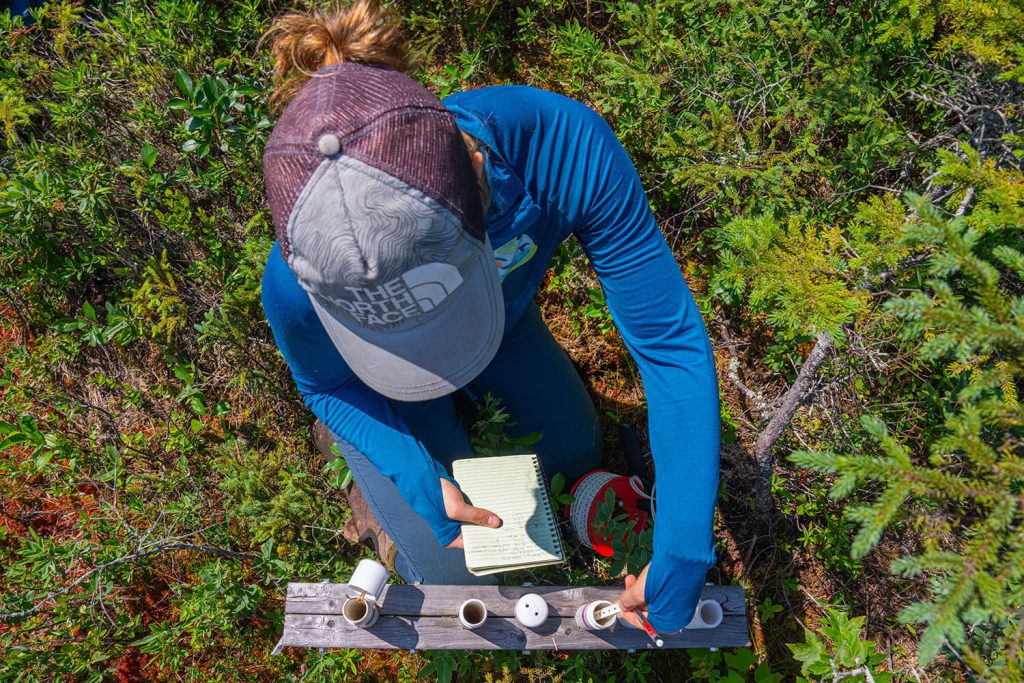
UMaine researchers explore the power in peatlands
Peatlands are a treasure trove of organic material. Researchers at the University of Maine are using their knowledge of hydrogeology and computer modeling to understand exactly what these overlooked areas contribute to the greater environment and how to ethically manage them.
Peatlands are marshy collections of dead and decaying plant matter. They are often referred to as fens or bogs, such as the Orono Bog in Orono, Maine. These ecosystems provide habitats for threatened species with nowhere else to go and act as water reservoirs for surrounding areas in times of drought. They are also a heavily influential part of the carbon cycle because they both release methane and store about a third of all the carbon in soil globally. When damaged, peatlands emit large amounts of greenhouse gasses into the atmosphere that contribute to climate change.
Andy Reeve, hydrogeologist and professor at the School of Earth and Climate Sciences at UMaine, is collaborating with others on a grant they received from the National Science Foundation to study how the surrounding geology influences groundwater flow within Maine peatlands, including Caribou Bog in Orono, Maine. These factors influence the emission of methane and carbon dioxide, two common greenhouse gasses, from the bog.

“If we want to control global warming, we need to understand where carbon is coming from and where it’s going,” says Reeve.
Much of his work involves installing and monitoring wells in the peatlands, which create an access point for him to measure the peat’s hydraulic properties. Using the data he collects working in the bog, Reeve creates computer models to simulate possible scenarios for the movement of chemicals in the groundwater.
“In hydrogeology, because you’re using wells you only have sparse data, you need something to combine all of that data in a sensible way and a model lets you do that,” says Reeve. “You can run a model and try to get the water levels and pressures to measure up with reality. It may not be realistic, but it’s a plausible model of what might be going on. You can run simulations that give you a way of testing ideas about how different factors influence the peatland, [like] how increased rainfall will affect the peatland, [or] how increased evaporation will influence the peat.”
Computer models can be configured to simulate the consequences of climate change or the development of flow patterns in peatland ecosystems. These changes in groundwater flow impact the exchange of carbon-based gas between the peatland and the atmosphere.
Reeve’s hydrogeology career began in the late 1980s, when environmental regulations, put in place due to concern over environmental contamination, drove an urgent need for hydrogeology specialists. He recalls a rapid turnover in the environmental business, a period of ‘wild west-like’ growth in opportunities. He conducted research in the Mangrove Swamps of Mexico and the Hudson Bay Lowlands before finding his way to Maine in 1996, where he still works as a mentor to the next generation of hydrogeologists.
“Most students I teach don’t go into peatland science — that’s a tiny niche field — but by going out and seeing how a well is installed and monitored, they get the gist and then they can go out and work on other issues,” Reeve says. “I see the peatland system work and the modeling we do as a good way for them to understand what hydrogeology is, and they can apply those things to waste sites or developing a municipal well field or whatever else they go off and do.”
Ph.D student Victoria Niedzinski works closely with Reeve on this project, mainly learning to structure efficient groundwater models using the coding language Python. She describes Reeve as a ‘Python wizard’ and has gained valuable knowledge from him in coding as well as hydrology and carbon cycling.

“When you walk in [to the bog], [Andy] will be able to point out the different plants and vegetation, he’ll know why certain plants are the way they are just because of the hydrology of the system,” says Niedzinski. “He has a great sense of humor, so it’s always lots of jokes, lot’s of trying to keep things light while we’re slogging through the bog for eight hours.”
Niedzinski intends to use what she has learned to continue with a career in understanding climate change through hydrology.
While overall interest and funding for the field of hydrogeology has decreased since its ‘boom’ in the late ’80s and ’90s, Reeve expects a resurgence in the need for professionals with this specific set of knowledge in light of approaching challenges to the environment.
“Climate change is going to drive a need for hydrologists that can mitigate the problems. We know there’s climate change, that problem has been defined and now it’s time to engineer solutions. Whether it’s providing irrigation water to Maine crops or figuring out what to do in the south when there are droughts, groundwater is going to be a part of that solution,” says Reeve.
This story was written by Erin Cabral, 2023 Summer Intern at the UMaine Division of Marketing at Communications.
Contact: Sam Schipani samantha.schipani@maine.edu
